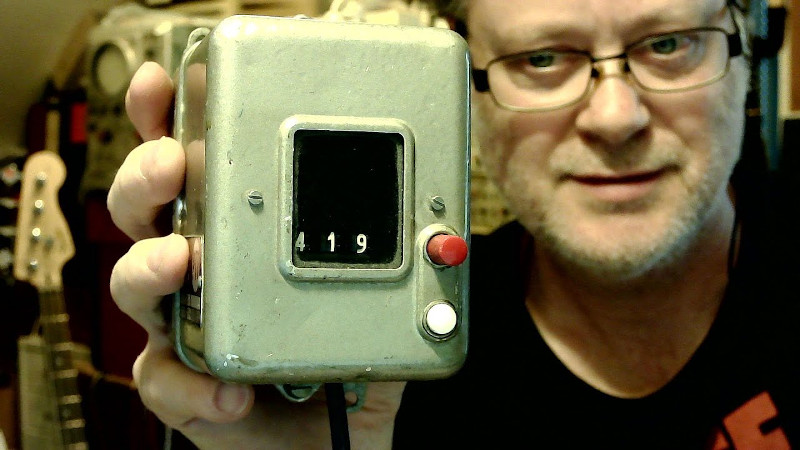The tikkenteller was a device used to measure the duration of telephone use. 70 Volts were sent down the telephone line at 50Hz to run an electromechanical counter, and the devices were often used in communal areas where several users shared a single phone. [Charles Babbadge] decided to repurpose the stout 1950s hardware into a simple counter.
The build uses an ATtiny13 to generate pulses for the original hardware, when receiving inputs from the tikkenteller’s buttons. A solid state relay is triggered by the microcontroller, which connects the original solenoid to mains power to jog the counter. An HLK-PM01 5V power supply is used to run the micro, allowing the entire project to run off a single mains supply.
It’s a big, heavy, beautiful hunk of metal, built in a style that we simply don’t see anymore. It’s in no way the cheapest or most efficient counter you could build, but it’s got a charm you can’t find on more modern hardware. You could use such a device to track your Youtube subs, that is… if the API hadn’t broken that for everyone. Video after the break.
















Your article starts out with a falsehood.
> The tikkenteller was a device used to measure the duration of telephone use.
No. The Tikkenteller was used to measure the COST of a telephone call. Back in the old days the cost would increment in steps of about 15 cents. For local calls (in the US and canada: free, but paid in europe) you pay one of those 15cts upon connection for the first 5 minutes and any (part of) 5 minutes after that. Or maybe it was 10 minutes.
National calls are more expensive, and international calls had many different rates. The most expensive one being inmarsat calls HFL 18 per minute, one 15 ct “tik” every half-a-second.
At one point in time, I think late eighties, our telephone exchange had a malfunction. It would divide the “master clock” for the rate you’d have to pay. So divide by one for inmarsat up to divide by 600 for local calls. The “divide by” circuit failed and all calls were charged at HFL 18 per minute. As a student that was an outrageous amount. The phone company told us they had records and would correct it. They didn’t have the records. What they did was calculate your average across the last 6 months and subtract a fixed amount. If your usage suddenly dropped just before the invoicing period with the mishap this was not to the advantage of the client. Took a bunch of phonecalls to get corrected.
(We had a “tikkenteller” and kept records. Better than the company!).
Sounds like good old PTT…
(Not that they are much smarter as KPN)
They were a common sight in student houses when I was in uni, in the nineties.
If you had to make an international call they were spinning so fast you could use them as a blow dryer.
(Or so we used to joke)
https://www.picclickimg.com/d/l400/pict/143150960696_/Contascatti-Telefonico-Digitale-Telecom-Nuovo-Con-Scatola-Telecom.jpg
Some of these system were made in microprocessor era. They were used in pubs and restaurants, where when you needed to make a call the bartender made you use a regular phone and then added the cost to the restaurant bill. This has a button to enable dialout.
This is the older electromechanical one, found in the old times, and was different compared the one used at private homes.
https://lh3.googleusercontent.com/proxy/V1vjJekEJEX41FXmwNAbJ4UFS67XA7JpKPWyEhwA9OskcBLgIok-vrPMlQd0X5V-fgPUuSF47O1z01zXKTEVNS60wTR8rGwEa-tKssS5hNXkh5mEbmayXdrR5Yb7HtdgKGuc9gC8bxUunRkXqjpXPQ
I used this particular one in my private home until appr. 1990. This 70V 50Hz system was only used in the Netherlands afaik. I used to work for a company that made the equipment on the other end, in the public exchange.
Charles (OP)
We had such a counting thingy at our restaurant. When we used it to make international calls, it would behave like an M16…, the noise at least reminds us to finish the call asap :-)